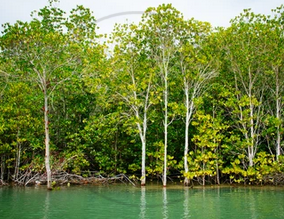Topics
Field Visit
Location and Extent
Physiography and Drainage
- Physical Divisions of India
- The North Indian Mountains
- The Himalayas
- North Indian Plains
- The Peninsular Indian Plateau
- The Indian Coastal Plains
- The Indian Islands
- Physiography of Brazil
- Brazilian Highlands
- The Great Escarpment in Brazil
- Coastline of Brazil
- Brazilian Plains
- Brazilian Island
- Drainage of Brazil
- Drainage Systems of India
- Himalayan Rivers
- Peninsular Rivers
Climate
Natural Vegetation and Wildlife
Population
Human Settlements
Economy and Occupations
Tourism, Transport and Communication
Geography - Physical Divisions of India
Identification of Physical divisions
- Identification of Physical Divisions
Geography - North Indian Mountains
Himalayas
Associated mountains
- Concept of Associated Mountains
Geography - North Indian Plain Region
Deserts
- Desert
Western Plains
- Concept of Western Plains
Central Plains
- Concept on Central Plains
Delta region
- Concept of Delta Region
Eastern Plains
- Concept of Eastern Plains
Geography - Peninsular Plateau Region
Chhotta Nagpur Plateau
- Concept for Chhotta Nagpur Plateau
Malwa Plateau
- Concept on Malwa Plateau
Maharashtra Plateau
- Concept for Maharashtra Plateau
Karnataka Plateau
- Concept for Karnataka Plateau
Telangana Plateau
- Concept for Telangana Plateau
Geography - Western Ghats and Eastern Ghats
Eastern Ghats
- Concept on Eastern Ghats
Sahyadries
- Concept on Sahyadries
Geography - Coastal Region
- Geography - Coastal Region
Eastern coastal plain
- Coastal Region - Eastern Coastal Plain
- Concept for Western Coastal Plain
Western coastal plain
- Concept for Western Coastal Plain
Geography - Indian Islands
- Geography - Indian Islands
Eastern Islands
- Indian Islands - Eastern Islands
Western Islands
- Indian Islands - Western Islands
Geography - Practical 1
Cartography
- Concept on Cartography
Geography - Practical 2
Two dimensional diagrams
- Two Dimensional Shapes
One dimensional diagrams
- Concept on One Dimensional Diagrams
Economics - Introduction of an Economy
Introduction of an Economy
- Economy
- Types of Economy
- Main Features of Economy
Economics - Basic problems of an economy solution
Solutions
- Concept for Capitalism
- Concept for Socialism
- Mixed Economy
Problems
- Introduction of Basic Problems of an Economy
- Problems- for Whom to Produce
- Problem - How Much to Produce
- Problem - by Whom to Produce
Economics - Inflation
Introduction
- Introduction of Inflation
Effects of inflation
- Effects of Inflation
Measures of Inflation
- Measures of Inflation
Causes of inflation
- Causes of Inflation
Economics - Public distribution system and consumer protection
- Measures of Inflation
Public Distribution system - meaning and explanation
- Public Distribution System - Meaning and Explanation
Introduction
- Introduction of Public Distribution System and Consumer Protection
Objectives of Public Distribution system
- Objectives of Public Distribution System
Remedial Measures
- Remedial Measures Public Distribution System and Consumer Protection
Consumer Protection
- Consumer Protection - Rights and Duties of Cunsumer, Food Adulteration
Drawbacks of Public Distribution system
- Drawbacks of Public Distribution System
Progress of Public Distribution system
- Progress of Public Distribution System
Notes
Mangrove Forests (Tidal Forest):
Littoral or Tidal forests are one of the most specialized tropical natural vegetation types. India has a variety of wetland habitats. Wetlands are lands between terrestrial and aquatic systems where the water table is usually at or near the surface of the land.
 |
 |
Mangrove Forests (Tidal Forest) |
|
(a) Climatic Conditions: These forests thrive in regions where the temperature lasts between 26° and 29°C and where the annual rainfall does not exceed 200 cm.
(b) Distribution: These forests can be found along sea coasts, in river deltas, tidal or other swampy areas, wet marshy areas, and other wet areas. They are primarily distributed in the deltas of large rivers on the eastern coast, and they are also found in isolated areas on the western coast in the saline swamps of the Sunderbans in West Bengal, as well as coastal areas of Andhra Pradesh and Odisha.
(c) Characteristic Features:
- They have mainly evergreen species that range in height and density and are typically connected to moisture.
- The tree trunks are held up by a number of stilt-like roots that are visible during low tide and remain submerged during high tide.
- They have profuse growth with a tangle of climbers, which is an adaptation for survival in soft and shifting mud.
- These forests have breathing roots called pneumatophores. During high tides, the roots are deprived of oxygen due to waterlogged conditions. Mangrove roots can thus be seen rising vertically above the ground. When other roots are submerged underwater during high tide, these vertical roots with pores allow the trees to breathe.
- The important trees include keora, amur, bhara, Rhizophora, screw pines, canes and palms, Sundari, agar, etc.
- Mangrove forests grow in salt marshes, tidal creeks, mud flats, and estuaries along the coasts. They can be found in West Bengal and the Andaman and Nicobar Islands. Other significant areas include the Mahanadi, Godavari, and Krishna deltas.
- These forests have Sundari trees, after the name of which these forests are known as 'Sunderbans' in the Ganga Delta.
- The Royal Bengal Tiger is the most well-known animal in these forests. These forests are also home to turtles, crocodiles, gharials, and snakes.
(d) Economical Value: Mangrove trees are used to make fuel, whereas Sundari trees provide hard, durable wood.
